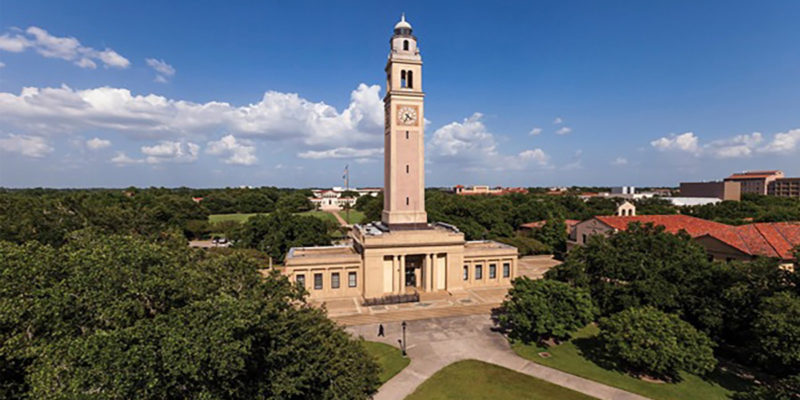It’s good to review occasionally the condition of Louisiana’s higher education funding, as the interest group Public Affairs Research Council did recently, especially trenchant with the ambitious master plan adopted by the Board of Regents three years ago. But to understand best policy, you have to ask the right questions.
The PAR note on financing trends observes how means of finance have changed since 2005. Back then, almost 60 percent came from the state general fund and dedications, while only about a third tuition and fees supplied. Last year, the proportions basically had shifted. Meanwhile, only in the past couple of years has financing in total dollars surpassed the previous high mark in 2008.
This doesn’t bode well for the master plan, which seeks to increase over a third the proportion of Louisianans with a college degree in 2018 by 2030, if it’s assumed more money must be thrown at the problem to achieve the goal. In its summation, PAR also repeats some of the usual talking points without proper context that seem to indict the state’s contribution, that it “struggles” with funding higher education, that its appropriations per student ranks among the lowest in the country and southern region, and that to offset the reset since 2008 tuition has gone up by about three-quarters.
In fact, the picture is much more nuanced. The large increase in in-state tuition and fees means today that the typical baccalaureate student pays … just above the U.S. average, 23rd overall but only sixth-highest in the south (and 25th of the 47 states with community colleges). The large change seems dramatic only because back then Louisiana subsidized higher education proportionally more than almost any state.
Further, as the PAR note mentions in passing, the results are skewed by the categorization of the Taylor Opportunity Programs for Students, the hybrid merit/entitlement grant where (by standardized test scores) any fair-to-middling high school student can get tuition (and fees for some) paid for college as self-generated rather than what it really is, footed by taxpayers. Adjust the $331 million spent on that last year, and the proportions between state and student paid for higher education are nearly the same at around $1.3 billion each.
The note also points out state spending has gone up significantly in the past two years. Yet this has been an artifact almost entirely of Wuhan coronavirus pandemic largesse from debt incurred by the federal government. Remove federal bucks from the equation and it’s budged from $2.63 billion to $2.66 billion.
Finally, per capita student spending from the peak state contribution in 2008 now actually is higher. Then, over 210,000 students had almost $12,000 spent on each of them. Last year, just over a thousand fewer students garnered each some $14,000. That 17 percent increase doesn’t trail by much price inflation of 27.7 percent in that period, so little ground has been lost.
In fact, as PAR observed in a note earlier this year, undergraduate enrollment has remained the same, roughly around 120,000, over the last decade and would be expected to do so for a state that barely increased in population in this time span. That the trend has continued since the master plan went into effect has created problems for its goal achievement, although you couldn’t tell from the cheery tone it struck in its recently-released third-year review.
Advertisement
It oozes optimism, despite the fact that completers of any credential – diploma, certificate, or degree – from the time the plan started until last year dropped from just over to just under 50,000, still far short of the 85,000 desired by 2030 to reach the goal of 60 percent of the adult population with credentials. Some of the plan to get there makes sense (streamline administrative hurdles), some of it is gimmicky (add in non-public institutions data), some of it involves moving goalposts (give more credits for learning outside of higher education and for “life experience”), and some asks for more money (given to the new TOPS-like program the M.J. Foster Promise Program and one to get dropouts to complete, as well as increased GO Grants), and it celebrates all the additional money thrown at higher education in the past two years.
However, the right question isn’t whether the state spends enough on higher education, but whether it does so wisely. And the answer to that remains negative as it continues to tolerate an overbuilt system, especially among senior institutions, that leaves too may institutions chasing too few students which produces one of the lowest ratios of adult population to public institutions in the country.
The master plan hope, of course, is to grow out of overbuilt status with more students to equal more completers (on top of wringing more completion out of the existing student population). But this becomes a chicken-and-egg problem in that it asks for money to prop up an inefficient system rather than shedding the surplus to create better efficiency with cost savings as the input to reach the goal.
Plus, pandemic-related decisions of the past couple of years have sabotaged the plan, especially the inexplicable implementation of a vaccine passport regime last year, only partially dismantled this year, that pushes Louisiana eligible college students out the door either to other states physically or online. The constitutionally-infirm attempt by Democrat Pres. Joe Biden to cancel payback of some student loans, creating the expectation this could happen in the future until the courts negate it, will accentuate this tendency further.
Policy-makers at best should add incrementally to Louisiana higher education taxpayer contributions. With the master plan hanging over its head, that approach will provide the proper incentive for it to work more efficiently and perhaps start building consensus to make the structural changes – downgrading and merging of institutions – needed to make the system work smarter over the long haul.
Advertisement
Advertisement

